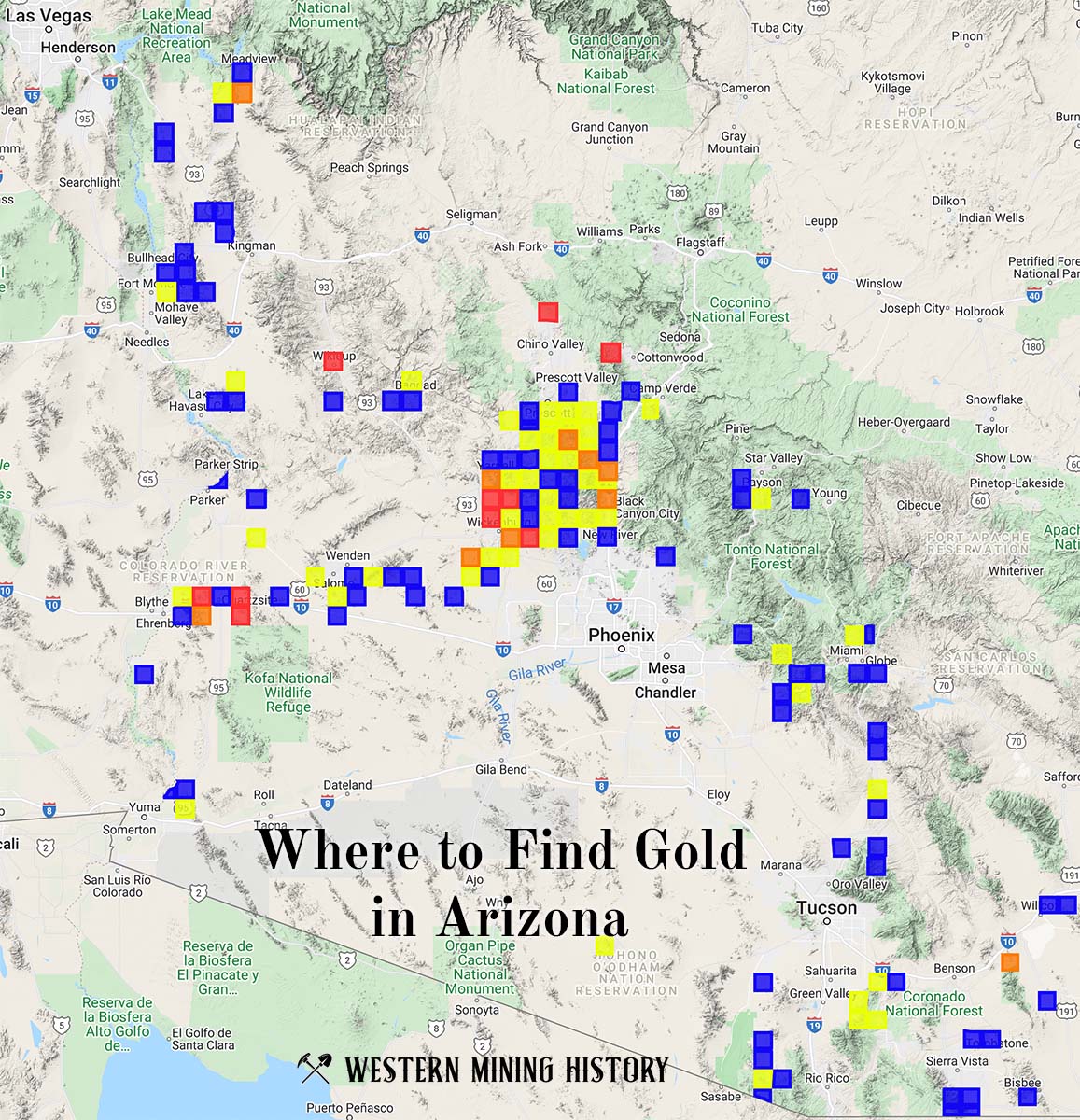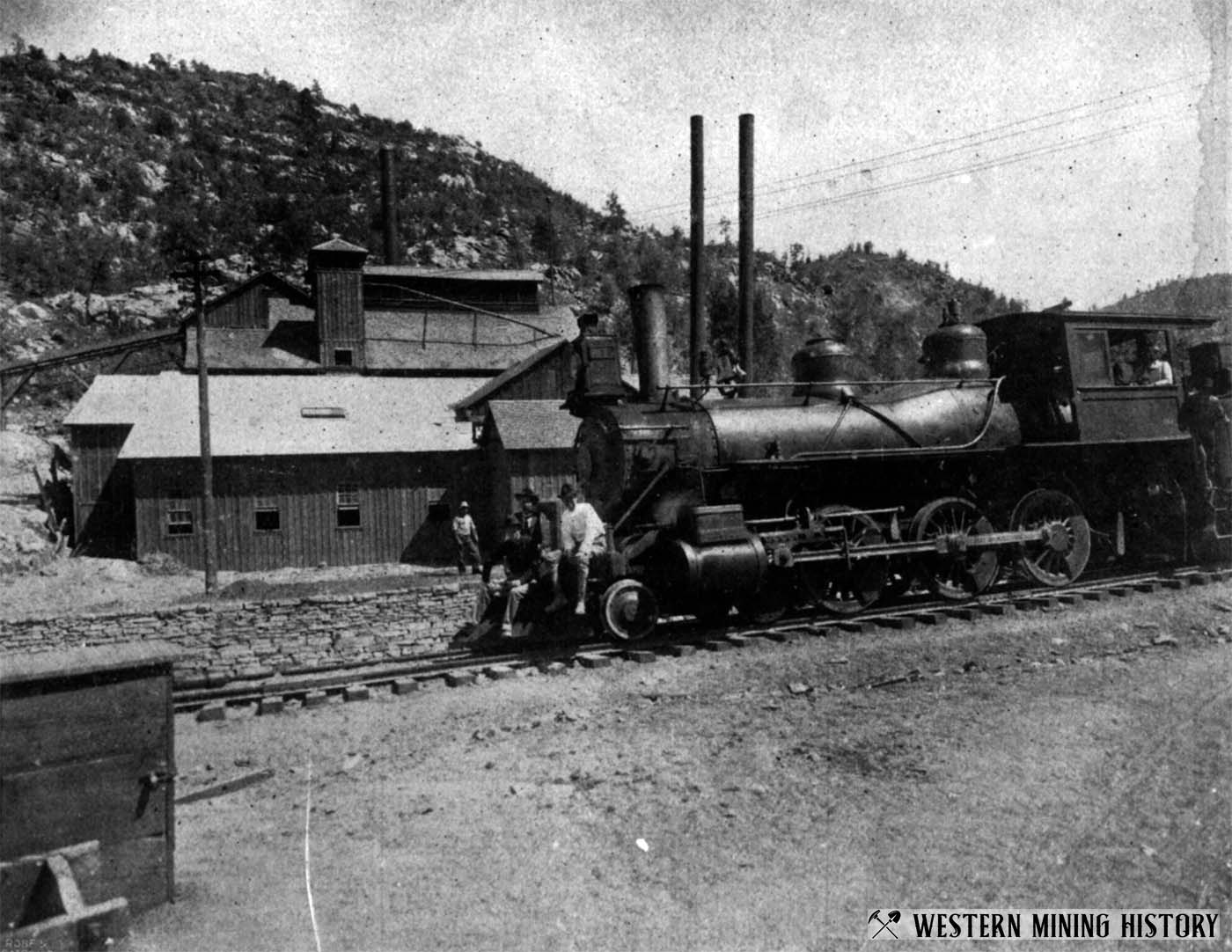Crown King History
The first precious metal bearing outcrops in the area were discovered in the early 1870s. Mines in the area were worked at small scale until late 1887 when eastern capitalist George P. Harrington began purchasing claims in the area. In January of 1888 he formed the Crowned King Mining Company.
In the spring of 1888, a sawmill and a 10-stamp mill were constructed at the Crowned King mine, and a post office was established at the site that June. The town of Crown King soon developed along the road connecting the mine and the mill, growing steadily as mining operations expanded. Many of its early residents came from nearby Bradshaw City, which by then was already in steep decline.
One of the first establishments at the camp was a saloon operated by Ike Patrick. The Crowned King Mining Co. filed for an injunction denying Patrick the license needed to legally run his business. The December 31, 1889 edition of the Arizona Daily Star reported:
Patrick’s station is located on the trail from the mine to the mill, making it very convenient for the packers to obtain a social drop, and as whisky usually had the effect of rendering men utterly regardless of whether the mill has any ore to pound or not, Mr. Place held that the station was an obstruction and nuisance, and unless it could be abolished, the plant, on which the company has expended over $100,000 could not be successfully operated.
A ten day injunction was served, but ultimately the company failed to prevent saloons from operating at Crown King.
The town eventually extended along most of the one-mile road between the mine and the mill. The mining company operated the general store and, in 1897, supplied electricity to the town from its power plant at the mine. Several saloons served the miners, and two Chinese restaurants were among the businesses in town.
In early 1899, exceptionally rich ore was reported at the Crowned King mine. The Weekly Journal-Miner heralded it as “the richest strike in the history of Arizona,” claiming that one sample assayed at an astounding $180,000 in gold per ton. Although such figures were almost certainly exaggerated, the discovery nevertheless marked a period of renewed prosperity for the mine.
The success of the Crowned King and other nearby mines led to the incorporation of the Bradshaw Mountain Railroad Company and the construction of a 28-mile rail line from Mayer to Crown King in 1904. The route climbed steeply into the Bradshaw Mountains, necessitating numerous switchbacks, a 142-foot tunnel, and a wooden trestle measuring 393 feet in length and 70 feet in height. According to a 1904 article in Leslie’s Weekly, portions of the line cost as much as $50,000 per mile to build.
The massive pile of mill tailing from decades of mining was reworked in 1906 and 1907. By this time the mine’s best days were over, and in 1909 it was sold at receiver’s sale for $75,000 to the Yavapai Consolidated co. In subsequent decades, the mine was worked intermittently under at least two different companies. In 1926 the railway to Crown King was abandoned and scrapped.
Although mining in the area ended long ago, the town of Crown King was never entirely abandoned. Today it is a minor tourist destination, with the Crown King Saloon serving as its primary gathering place. The saloon was originally constructed in the nearby town of Oro Belle, then disassembled and relocated to Crown King in 1910.
Arizona Mining Photos

View over 35 historic Arizona mining scenes at A Collection of Arizona Mining Photos.
Arizona Gold

"Where to Find Gold in Arizona" looks at the density of modern placer mining claims along with historical gold mining locations and mining district descriptions to determine areas of high gold discovery potential in Arizona. Read more: Where to Find Gold in Arizona.
